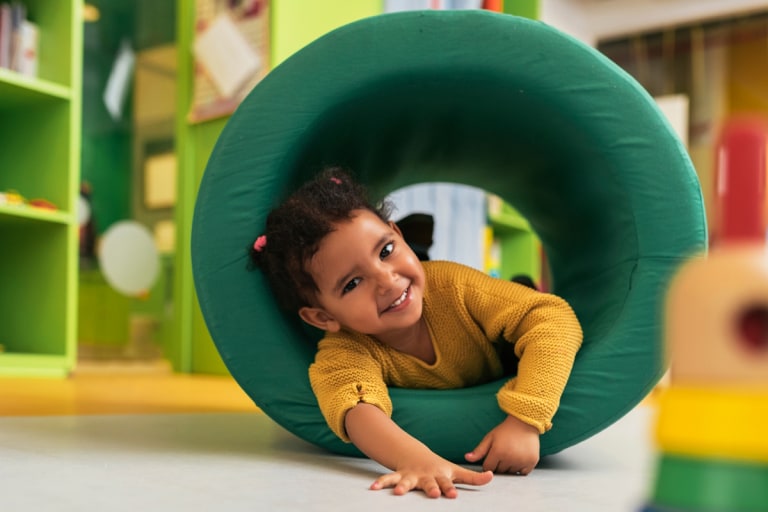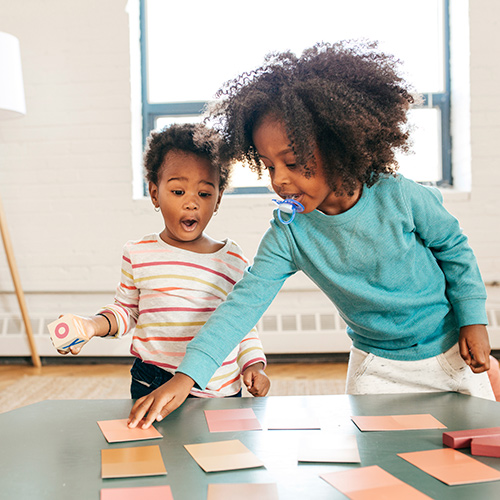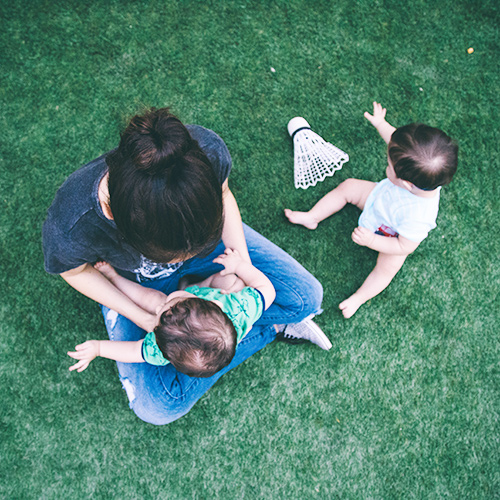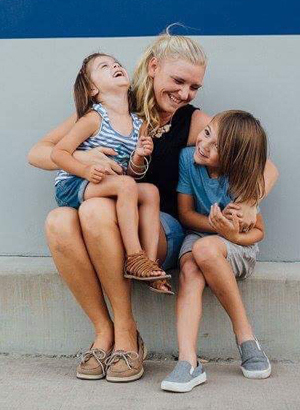
8 Important Signs of a Great Daycare
Looking for a daycare? Here are the signs you may have found the right one.

By Karell Roxas
When you start looking for daycare, the options can seem overwhelming. How do I know this one is better than this one? Which reviews can I trust? You want the most affordable, highest quality daycare that’s close to your home or work—that’s not too much to ask, is it?
First, breathe. “The search for the right daycare is going to be stressful, but don’t get discouraged,” says Sydney Ziverts, Health & Nutrition Investigator at Consumersafety.org. “It’s important to start thinking about childcare well before the baby arrives. A general rule of thumb for parents going right back to work after the baby is born is to begin looking in the second trimester. If you live in a big city, the sooner the better.”
Having time on your side is one way to ensure that you’ll get the best daycare for you and your baby’s needs, but what else should you keep in mind?
Here are eight signs of a great daycare.
1. Stellar Reviews
Positive reviews are a great sign when looking for a daycare center. This doesn’t necessarily mean just the ones you’ll read online (though, of course, check those too!). You can find reviews on websites like Winnie, Care.com and even local parent groups on Facebook. Ask the daycare to provide you with a few names and numbers of parents you can call for references, or tap your network of friends and family to see which local center is their favorite.
As you’re sifting through reviews, take note of any patterns, good or bad. “No provider is perfect, but if the same type of complaints are lodged, something isn’t right,” says Traci Sanders, author of Right at Home: A Parent’s Guide to Choosing Quality Child Care.
When you do go online, don’t underestimate social media. “Many daycare providers have Facebook pages,” says Ziverts. “Read what they are posting, and pay attention to what parents are saying too. When parents are engaged, it’s a healthy sign of a trusted childcare business.”
2. A Caring, Stimulating Environment With Happy Kids
You’ll feel it right when you walk in the door. In this situation, first impressions really are everything. Does it seem like a vibrant, clean, fun space for your child? “Take a look at the environment and be sure it’s home-like, welcoming and reflective of diversity and the children in the classroom,” says Rachel Robertson, Vice President for Education and Development at Bright Horizons. Note whether they have age-appropriate environments for each stage. For example, does the infant room have plenty of floor space for crawlers or babies who need tummy time? Or do the older kids have desks or tables for coloring or crafts?
Observe the children. Are they happy and engaged? Do they have access to diverse activities and projects? Do they seem responsive and comfortable with the caregivers? “Assess how children are encouraged to explore the environment. Can they make independent choices?” adds Robertson. “Also, look for evidence that children’s interests and ideas are respected and reflected. Do you see displays of what the children are doing and learning?”
When you’re feeling really great about the environment, you can probably imagine your child there: standing by the play kitchen sink, gabbing away with another child, or crawling around on the foam mats searching for a book to read, or, you know, eat.
3. An Interesting and Varied Schedule or Curriculum
What constitutes “great” here will have more to do with what you want for your child’s ideal day. Do you want them to have a loose, fluid schedule that is more child-led and changes often? Or would you prefer a more school-like educational environment that has a curriculum? Either way, an excellent daycare will meet your needs. “Excellent early care and education programs allow for children to be invested in the materials and their learning. Skilled teachers balance important learning outcomes with children’s natural interests,” says Robertson. “No matter what kind of program you select for your child, you and your child’s teachers can join in a partnership to enhance your child’s learning experience. By building strong home-school relationships from the start, parents and teachers can support children and prepare them for future success, both in and outside the classroom.”
4. Qualified Caregivers Who Really Care
How do you assess the adults in the room? First, make sure they have the basics in terms of certification and training. Most should have degrees related to early childhood development or be in the process of obtaining one, with at least two years of college under their belt. They should also be trained in CPR and any other emergency procedures.
When it comes to the intangibles, you can learn a lot simply by observing. Listen to how the teachers or caregivers interact with the children and take note of their body language. “Look for teachers talking respectfully to children at children’s eye-level,” says Robertson. “Parents want to hear meaningful conversations and respectful tone of voice, even in infant and toddler rooms, rather than an authoritative tone, constant directions or a lot of no’s.”
Beyond interacting with the children, how comfortable do you feel with the caregivers? Are they communicative and eager to be a partner with you in caring for and educating your children? If so, then you’ll know you’re looking in the right direction.
5. Safety, Safety, Safety
This is a no-brainer.
Great daycare centers go above and beyond to ensure children’s safety. This includes childproofing, food safety practices, a well-kept and maintained play space with sets of toys (making sure none of have been recalled) and constant supervision.
A well child-proofed space will have:
- Covers on every outlet
- Cribs out of reach of blinds or windows
- Window blind pull strings are out of reach or fastened with anchors
- Stairs blocked by a baby gate
- Changing tables and high chairs with straps
- Clean toys in good condition (no broken toys)
- No small objects around that children could choke on (especially important in centers that cover multiple age groups)
- Potentially toxic substances (like medications and cleaning supplies) are secured
6. Low Child-to-Caregivers Ratio and Low Employee Turnover
Look for 1:4 caregiver to child ratio for infants.
The more hands on deck, the better. You want to see a high amount of caregivers per group of children. And ideally, you’d have the same caregivers day in and day out. “It’s best if children stay with the same caregiver for at least a year,” says Krystal Rogers-Nelson, a parenting and child safety expert for A Secure Life. Consistency for your child goes a long way to maintaining a happy well-being.
The National Association for the Education of Young Children (NAEYC) has a useful chart that shows the recommended ratios for each age group and group size. For infants under 15 months old, with a group size of 8 or less, the ratio should be 1:4. For toddlers up to 2.5 years old with a group size of 10 or less, the recommended ratio is 1:4, and for preschool-aged kids up to 4 years old with a group size of 10 or less, the recommended ratio is 1:6.
7. Established Policies and Consistent Rules
Great daycares have written-down, well-established operating policies for small things like when they do circle time to more crucial rules like how to handle sick children or emergency situations. You don’t want a place that’s so inflexible you can’t do something like pack a special meal for your child, but you also don’t want one that’s so loose with their rules and policies that it can be confusing or feels unsafe.
8. Licensed (and Maybe Accredited)
Licensing is the legal state requirement and accreditation is a higher bar.
Each state has basic legal requirements for operating a daycare, so being licensed is non-negotiable. But whether or not a great daycare center also needs to be accredited is completely up to you and may depend on availability in your area.
State licensing agencies validate that the center is safe and abides by all official regulations. Accreditation agencies are private and evaluate centers based on a wider range of criteria that can be very specific. For example, benefits are provided to all employees, vehicles do not idle in the parking lot, wheel toys that are used outside are not used inside, etc.
Three organizations run accreditation programs in the US:
- National Association for the Education of Young Children (NAEYC)
- National Accreditation Commission for the Early Care and Education Programs (NAC)
- National Early Childhood Program Accreditation (NECPA)
If you want to find an accredited program, NAEYC has the largest list and is a good starting place. Keep in mind, accreditation is not an end-all-be-all for quality childcare. Very few childcare programs in California are accredited by any of these organizations, for instance. There can be plenty of other criteria (location, price, childcare philosophies) that may be more important to you.
Overall, the best daycares have the magical combination of everything above, while also checking the boxes on your own personal wishlist, especially making you feel secure and happy to leave your child there every day. “Their teachers and friends become their first away-from-home village family,” says Wagner. “I never really thought about that part until my first child started daycare.”

Everything You Need to Know About Childcare

Everything You Need to Know About Nannies and Au Pairs

Choosing Childcare
A closer look at six families and their childcare choices